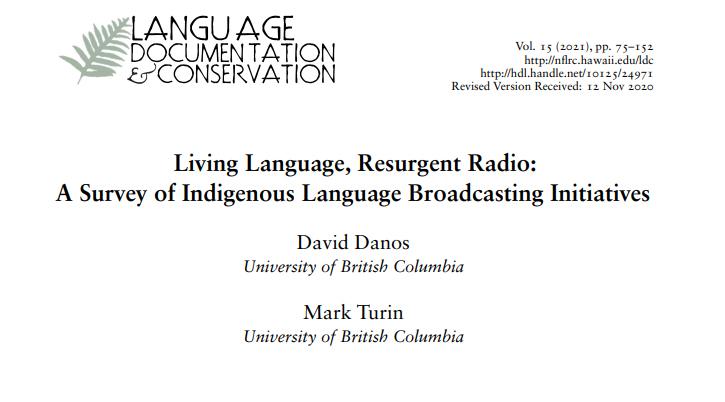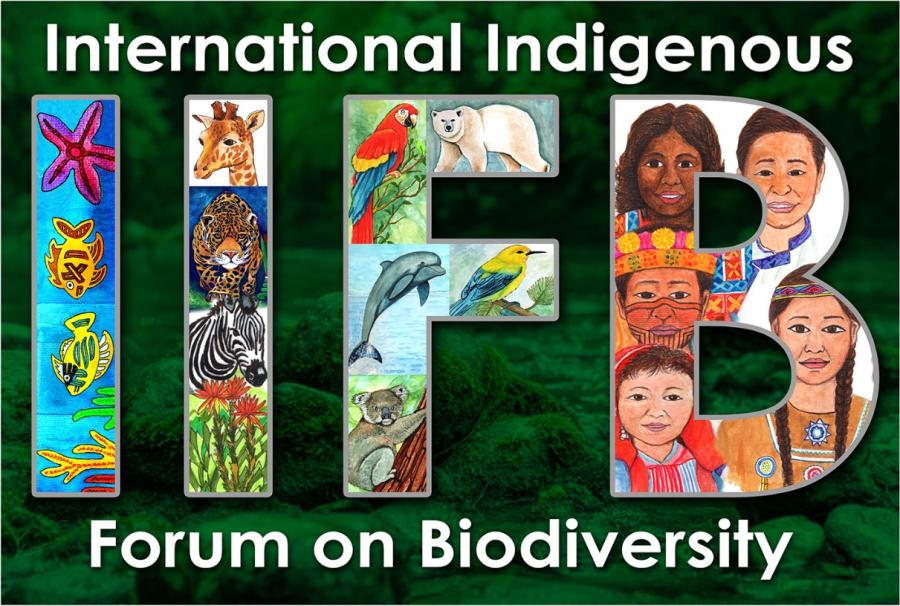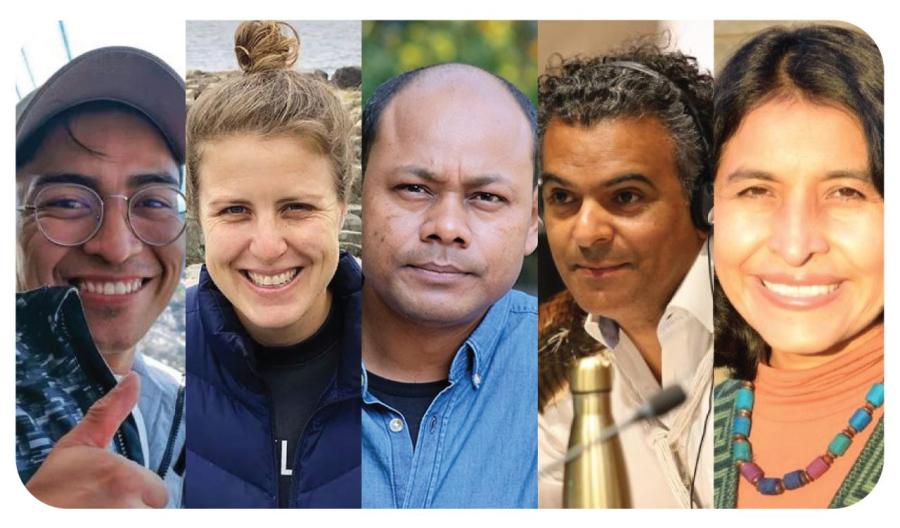
By David Danos and Mark Turin
For a demise that has been predicted for over 60 years, radio is a remarkably resilient communications medium and one that deserves careful examination as a vehicle for the revitalization of historically marginalized and Indigenous languages.
In this recently published peer-reviewed article, Danos and Turin highlight effective and imaginative uses of radio for Indigenous language reclamation through a series of case studies. Beginning with three inspiring community radio stations—among the Navajo, Nuxalk, and Poqoman Maya, respectively—the authors draw distinctions between state-sponsored and community broadcasting.
The article then explores a number of community-run, though state-supported, Indigenous radios across the world, from Nigeria to Colombia, through Aotearoa-New Zealand and Canada, and finally to Australia. From there, Danos and Turin examine how state-sponsored radio functions, through a comparison between the settler-colonies of Australia and Canada and the post-colonial landscapes of Zimbabwe and South Africa, ending with a brief survey of radio spaces in Mexico and Nepal.
The authors conclude that the success of radio for Indigenous language programming can be attributed to the comparatively low cost of operations, its asynchronous nature that supports programs to be consumed at any time (through repeats, podcasts, downloads, and streaming services), and the unusual, even unique, quality of radio being both engaging yet not all-consuming, meaning that a listener can be actively involved in another activity at the same time.
"In this review, we have looked beyond such predictions to investigate expressions of vitality that demonstrate that radio – both online and on air – can be a highly effective tool for cultural revitalization and linguistic resurgence....The adoption, deployment, mobilization, and Indigenization of radio within Indigenous communities challenges commonly held and deeply entrenched beliefs about the future of radio and the currency of Indigenous languages...Although we offer only a brief overview of various approaches and initiatives worldwide, the case studies included in this article indicate that radio is not only an important communicative and broadcast medium, but increasingly a tool for Indigenous language resurgence and cultural pride....A common theme that emerges from our survey is that national policy plays a key role in ensuring (and, in some cases, impeding) the vitality of both Indigenous languages and the broadcasting landscape."
Radio has not been eroded by the rise of new media, whether that be television, video, or newer multimodal technologies associated with the internet. On the contrary, communities are leveraging the formerly analogue medium of radio in transformative ways, breathing new life into old transistors, and using radio for the transmission of stories, song, and conversation.
.



